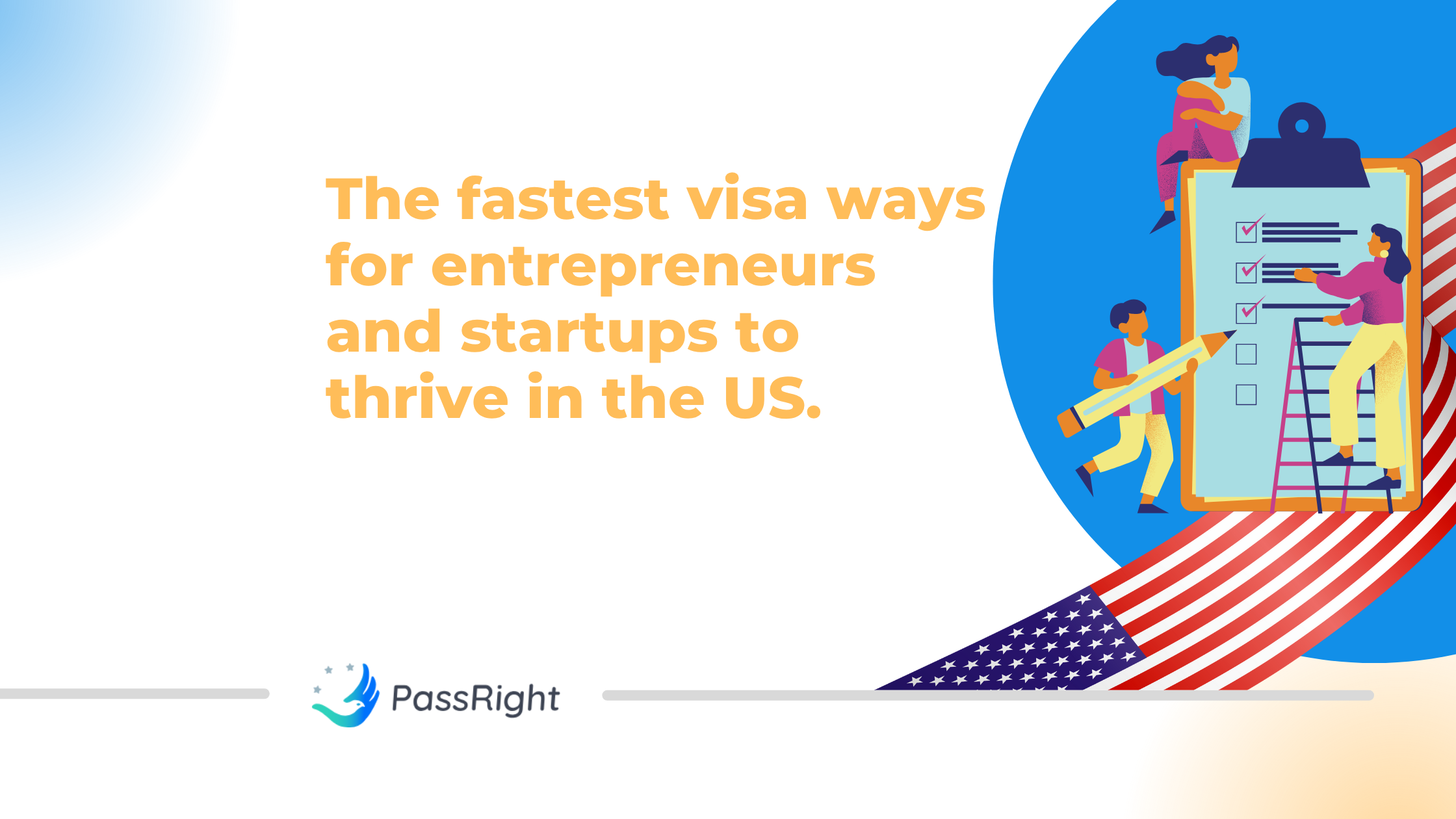The E-2 Visa is a well-liked option for investors and entrepreneurs who aspire to reside and engage in employment opportunities within the United States. However, a significant concern for E-2 Visa holders is that this type of visa does not directly lead to a Green Card. As a non-immigrant visa, the E-2 Visa is temporary in nature and does not grant permanent residence. This can pose difficulties, particularly for E-2 Visa holders with dependent children. When their children reach the age of 21, they are no longer eligible as dependents under the principal E-2 Visa holder, necessitating their departure from the United States or acquisition of a separate visa.
It is important to note that the E-2 Visa explicitly prohibits holders from having the intent to immigrate to the United States at the time of visa issuance or entry. Consequently, it does not offer a direct pathway to permanent residency or a Green Card. However, once in the country, E-2 Visa holders are eligible to explore and pursue alternative options for obtaining permanent residency, provided they do not violate their E-2 status in the process.
In this article, we will delve into the world of E-2 Visas, discovering its intricacies and potential. Join us as we explore various pathways to transition from an E-2 Visa to a Green Card. Stay with us till the end to unlock valuable insights and options for your immigration journey.
The E-2 Treaty Investor Visa
When individuals from foreign countries plan to visit the United States, they usually require a visa, which can either be a nonimmigrant visa for temporary stays or an immigrant visa for long-term residency. The Treaty Investor (E-2) Visa, in particular, is designed to assist citizens of treaty countries which are countries that have established commerce and navigation treaties with the United States.
Requirements for E-2 Investor Visa Eligibility
Before obtaining an E-2 Treaty Investor Visa, there are several requirements that must be met by the investor, partnership, or corporate entity. The following list outlines the key criteria necessary for obtaining the visa.
- Citizenship: The investor, regardless of whether they are an individual, partnership, or corporate entity, must hold the citizenship of a country that has a treaty with the United States.
- Ownership: If a business is involved, at least 50% of the enterprise must be owned by persons with the nationality of the treaty country.
- Substantial Investment: The investment must be substantial, with funds or assets committed and irrevocable to ensure the successful operation of the enterprise.
- Real Enterprise: The investment must be an active commercial or entrepreneurial undertaking that generates significant income, rather than just providing a living for the investor and their family. A paper organization, idle investment, or speculative venture does not qualify.
- Economic Impact: The enterprise must have a significant economic impact in the United States.
- Control and Risk: The investor needs to be in charge of the funds, and the investment must involve a genuine commercial risk. Loans that are guaranteed with the assets of the investment enterprise are not allowed.
- Investor Role: To be eligible, the investor should come to the US with the intention of directing and developing the enterprise. If the investor is not the primary investor, they can still qualify if they are an essential employee holding a supervisory, executive, or specialized skill position. However, regular skilled or unskilled workers cannot apply.
Employer Sponsorship Green Card
As an E-2 Visa holder, you have the opportunity to pursue employment-based immigration and potentially obtain a Green Card through a job offer from a US-based employer.
Under the second preference (EB-2) category, employers can sponsor E-2 Visa holders who possess advanced degrees or are falling under the exceptions possessing exceptional abilities, enabling them to work in the United States.
Similarly, E-2 Visa holders can also be sponsored under the third preference (EB-3) category, which is available for skilled workers, professionals with a bachelor’s degree, and eventually, unskilled workers.
The first step involves the PERM Labor Certification process, which aims to ensure that job opportunities are not unfairly denied to American workers due to the preference given to foreign national candidates.
During the PERM process, sponsoring businesses must provide a “prevailing wage determination” and advertise the position for at least 30 days, allowing eligible lawful permanent residents in the US to apply for the job.
Permanent Residence Through the EB-5 Visa
The EB-5 Visa is designed for investors seeking immigrant status. With an EB-5 Visa, you, your spouse, and unmarried children under 21 years old can obtain a Green Card.
Recent regulations have brought changes to the EB-5 Visa program, including an increased investment threshold. The amount for targeted employment areas (TEAs) has been raised from $500,000 to $800,000, while other investments now require up to $1.05 million. The new regulations also impose stricter rules for determining TEAs, potentially leading to fewer TEA projects or an increase in projects located in truly rural areas. While the EB-5 Visa remains an option for E-2 Visa holders, the requirements have become more demanding to choose this pathway. Additionally, the U.S. business associated with your investment must create 10 full-time jobs.
Although the EB-5 Visa shares similarities with the E-2 Visa, there are key differences between them. As a result, converting your E-2 Visa to an EB-5 Visa is often seen as a straightforward and logical approach for transitioning from an E-2 Visa to a Green Card.
EB-1A Visa for Individuals with Extraordinary Ability
The EB-1A Visa presents an alternative option for transitioning from an E-2 Visa to a Green Card. It is an immigrant visa intended for individuals with extraordinary abilities in fields such as arts, sciences, athletics, education, or business. Extraordinary ability refers to being among the elite few who have excelled in their respective fields.
To qualify for an EB-1A Visa, three criteria must be met:
- Demonstrate extraordinary ability.
- Show intent to work in the United States within your field of extraordinary ability.
- Establish that your entry to the United States will significantly benefit the country.
One notable advantage of the EB-1A Visa is that it does not necessitate an employer to sponsor you. You can independently apply for an EB-1A Visa without the need for a job offer or company sponsorship.
Green Card Through the National Interest Waiver
The National Interest Waiver (NIW) offers another pathway for transitioning from an E-2 Visa to a Green Card. It falls under the EB-2 Visa category and is accessible to individuals with exceptional abilities or advanced degrees.
In essence, the National Interest Waiver serves as a waiver for the requirement of having an approved labor certification from a U.S. employer. By obtaining a National Interest Waiver, you can apply for an EB-2 Visa without the need for a company sponsor or a job offer in the United States.
To qualify for a National Interest Waiver, you must meet the following four requirements:
- Meet the criteria for an EB-2 Visa (excluding the labor certification).
- Establishing that the foreign national’s proposed endeavor holds significant merit and national importance.
- Be well-positioned to advance your proposed endeavor.
- Show that waiving the requirement of a U.S. job offer from a company with an approved labor certification is in the national interest of the United States.
Going from E-2 Visa to Green Card Through Marriage
Another pathway for E-2 Visa holders to obtain a Green Card is through marriage to a U.S. citizen or a lawful permanent resident. If the marriage is legitimate and in good faith, it can provide the E-2 Visa holder with immigration benefits. By marrying a U.S. citizen or lawful permanent resident, the E-2 Visa holder may be eligible for a family-based Green Card, which could allow them to live and work in the United States permanently. It is important to note that the marriage must be bonafide and not entered into solely for immigration purposes, as fraudulent marriages for the sole purpose of obtaining immigration benefits are illegal and can lead to serious consequences.
Conclusion
In conclusion, while the E-2 Visa offers a fantastic opportunity for individuals to reside and work in the United States through investment in a U.S. company, it does not directly provide a pathway to a Green Card. To transition from an E-2 Visa to a Green Card, one must explore alternative immigrant visa classifications.
There are several immigrant visa options worth considering. The EB-5 Visa is suitable for those willing to make a substantial investment in a U.S. business. Company sponsorship is another route to explore, where an employer supports the individual’s Green Card application. The EB-1A Visa is available for individuals with extraordinary abilities, while the National Interest Waiver offers an exemption from the typical labor certification requirement. Lastly, a marriage-based Green Card is an option for those in a bonafide marriage with a U.S. citizen or lawful permanent resident.
By understanding these various immigrant visa classifications, E-2 Visa holders can explore the most suitable pathway to obtain a Green Card and enjoy permanent residency in the United States.
FAQ
What is the E-2 Treaty Investor Visa?
The E-2 Treaty Investor Visa is a type of non-immigrant visa designed to assist citizens of treaty countries that have established commerce and navigation treaties with the United States to live and work in the United States.What are the requirements for E-2 Investor Visa eligibility?
The investor must possess the citizenship of a treaty country, own at least 50% of the enterprise if a business is involved, make a substantial investment, ensure the investment is an active commercial or entrepreneurial undertaking that generates significant income, the enterprise must have a significant economic impact in the United States, the investor must have control of the funds and the investment must be at risk in the commercial sense, and the investor must be coming to the United States to develop and direct the enterprise.Does the E-2 Visa directly lead to a Green Card?
No, the E-2 Visa does not directly lead to a Green Card as it is a temporary non-immigrant visa.Can E-2 Visa holders pursue employment-based immigration and potentially obtain a Green Card through a job offer from a US-based employer?
Yes, E-2 Visa holders have the opportunity to pursue employment-based immigration and potentially obtain a Green Card through a job offer from a US-based employer under the second preference (EB-2) category, which is available for those who possess extraordinary ability or advanced degrees, or under the third preference (EB-3) category, which is available for skilled workers, professionals with a bachelor’s degree, and eventually, unskilled workers.









